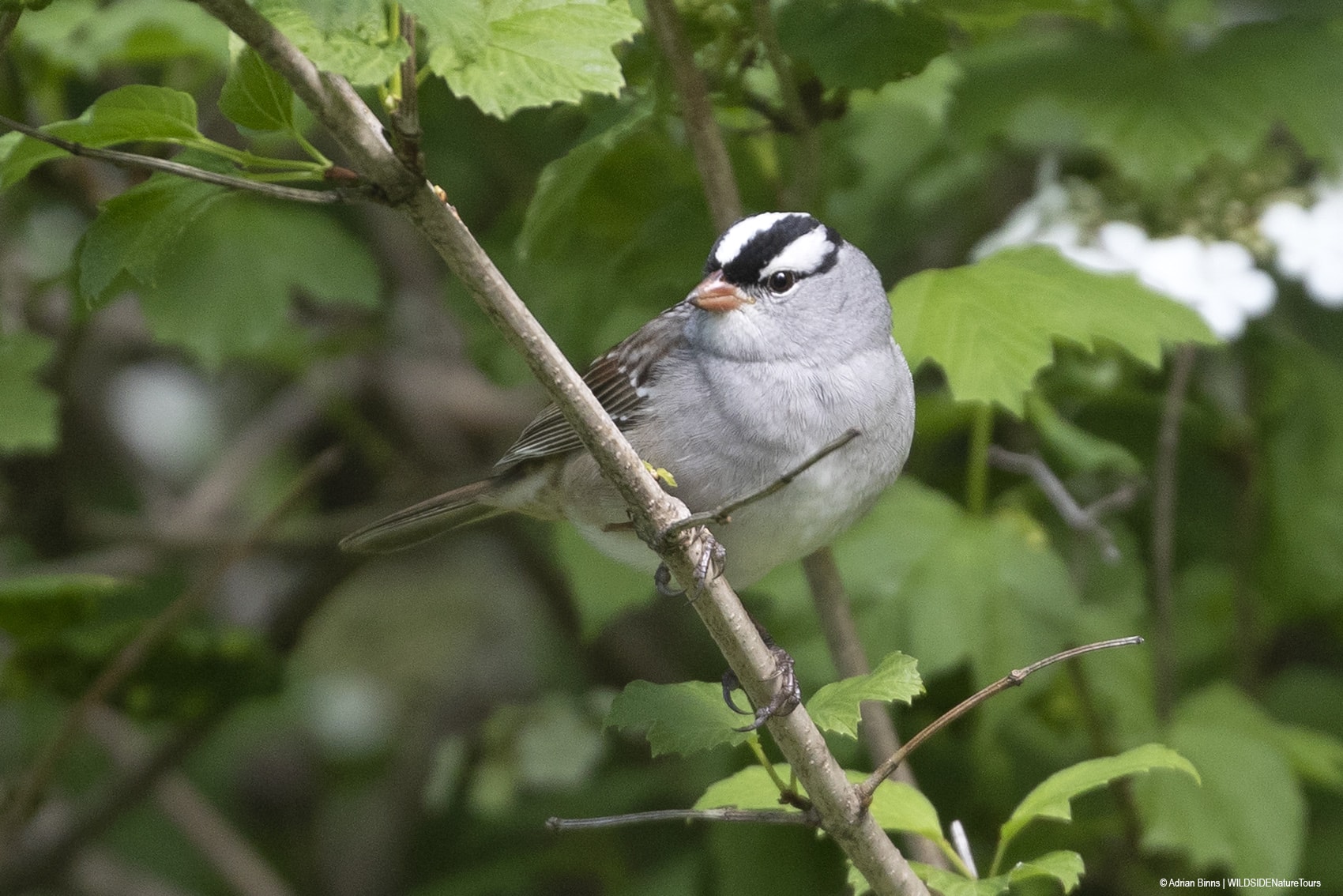
IN THE BACKYARD : Philadelphia – May
Jun 4, 2021 | by Adrian Binns
May is migration month in the Philadelphia area, and it was a pleasure to host a variety of warblers and other passerines in the backyard during their migratory journey.
The month started with Black-and-white, Yellow-rumped, Black-throated Blue, Yellow, Blackpoll, and Black-throated Green Warblers, Northern Parula, Common Yellowthroat, and Ovenbird. On May 7th, I found 12 species of warbler in the yard, adding Magnolia, Blackburnian, and American Redstart to those already mentioned. Interestingly, only one of each.
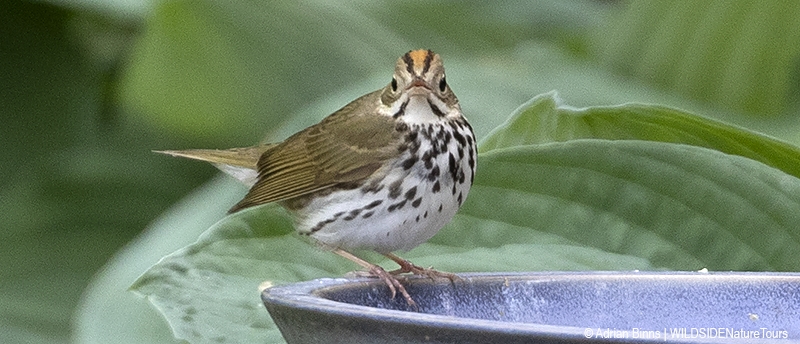
Ovenbird
Overall, there were no large numbers of any one species. The highest number of a species that we recorded on any day was 4 Yellow-rumped Warbler. A pair of Black-throated Blue Warblers stayed for about a week, and an Ovenbird (or was it several different individuals) strutted the grounds on many days.
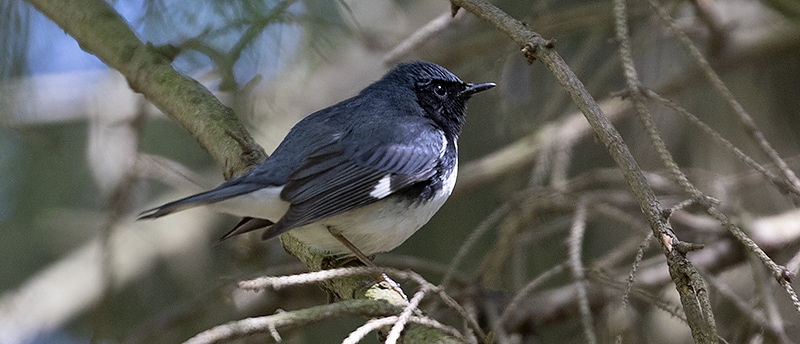
Black-throated Blue Warbler
I saw one Chestnut-sided Warbler on May 9th, followed by a Cape May on the 10th, and a Prairie Warbler on May 12th; the latter was a new yard bird (#126).
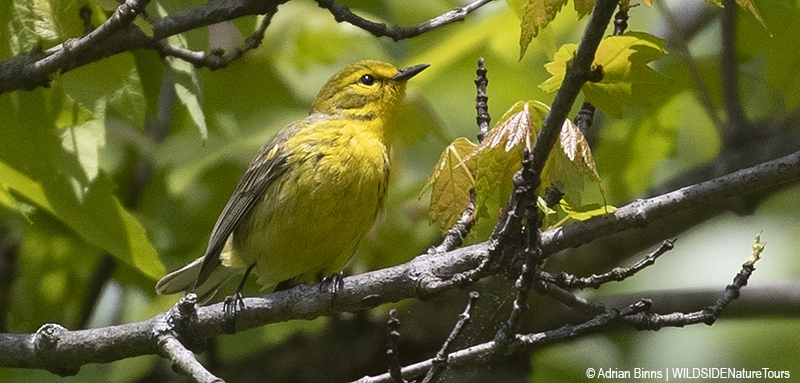
Prairie Warbler, female
Two Ruby-throated Hummingbirds visited very briefly at the beginning of the month before moving on. None seem to be breeding within striking distance of our nectar feeder, as we haven’t seen any since.
Over the course of the month a handful of passerines visited our backyard habitat. Some of these nest locally, others continued their northbound journey to breeding grounds. A Blue-gray Gnatcatcher was seen a few times, and a Red-eyed Vireo sang in full voice on several occasions. In mid-May we heard Wood Thrush and Veery, while a Gray-cheeked Thrush showed briefly. On May 19, three Swainson’s Thrushes spent the day in the shaded corner near our mulch bin, finding plenty of bugs to eat.
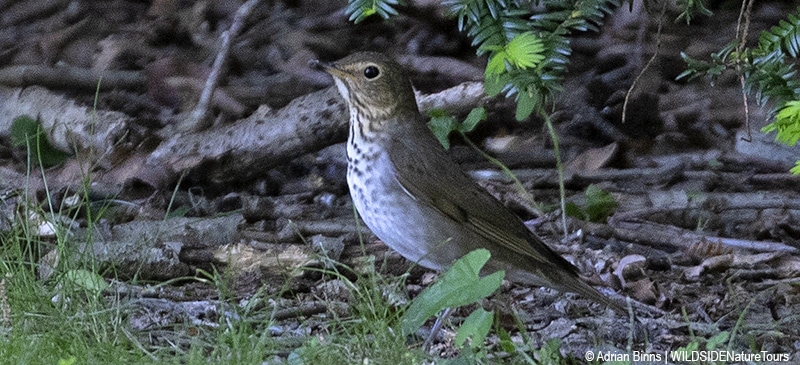
Swainson’s Thrush
A female Scarlet Tanager visited the birdbath for a drink, and Eastern Wood-Pewee and Great Crested Flycatcher – two species likely breeding somewhere in our neighborhood – were seen only one day.
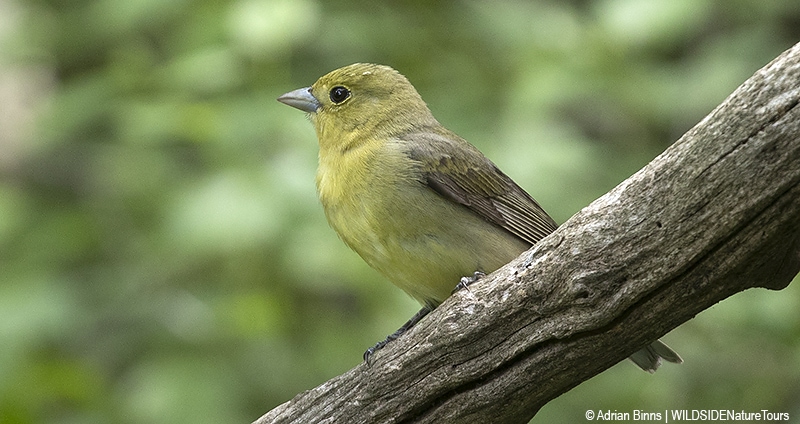
Scarlet Tanager, female
On May 8, Wildside guides participated in the Global Big Day, timed for World Migratory Bird Day. Deb and I spent most of the day birding various locations in Delaware and Philadelphia Counties. We returned home at sunset to find a lovely surprise – a stunning male Rose-breasted Grosbeak sitting on the platform feeder eating sunflower seed.
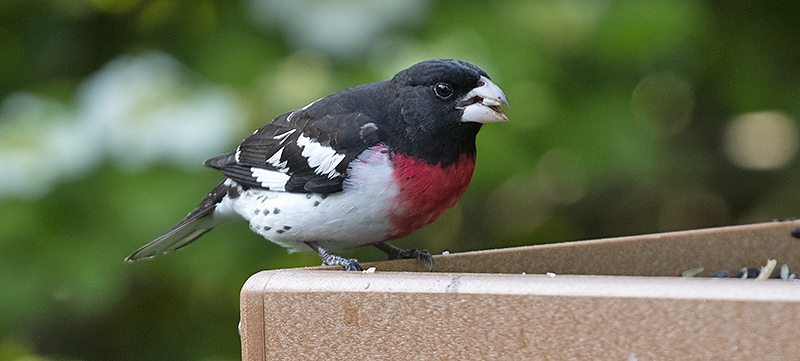
Rose-breasted Grosbeak
A White-crowned Sparrow was a highlight of the month. We’ve documented fleeting occurrences in the yard over the years, but this crisp-looking adult bird first appeared on May 6, and stayed for an astounding 8 days, never far from the feeders. It was lovely to hear him singing each day. Our last wintering White-throated Sparrow departed on May 17, a month after the last Dark-eyed Junco.
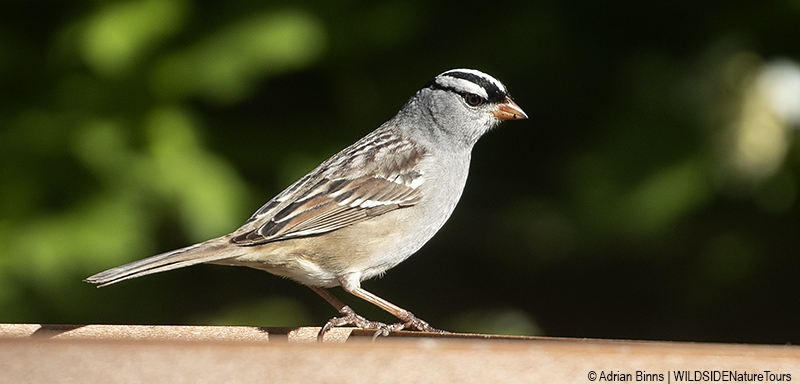
White-crowned Sparrow
It’s a treat to see birds that have only been seen once in the yard. On May 4th a male Indigo Bunting came to the bird bath, followed by a female the next day. On May 19th a Yellow-billed Cuckoo alighted briefly in the mulberry tree; it glided from tree to tree before eventually flying away. Both of these species were the first spring records, as the previous sightings were in the fall.
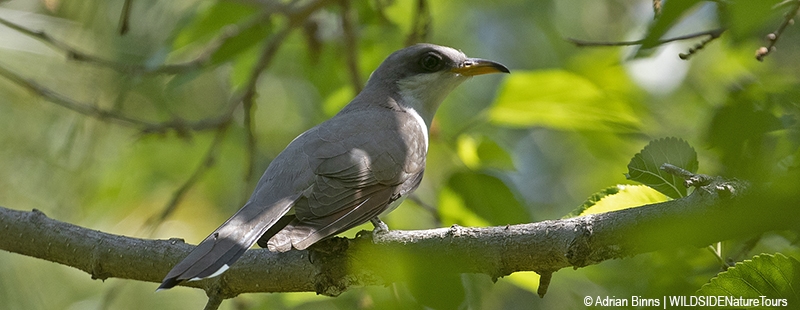
Yellow-billed Cuckoo
By the month’s end, resident breeders were in full swing in the yard. A pair of boisterous House Wrens had staked-out territory, and the female was busy incubating eggs in their preferred nestbox. House Finches, Downy Woodpeckers and Carolina Chickadees had already fledged broods, and were leading their offspring to the feeders. It’s been fun watching a family of 5 chickadees take black-oil sunflower seeds from the hopper. The next generation of Gray Catbirds, Blue Jays and American Robins should be coming soon, and we look forward to seeing many young birds in the coming weeks.
updated May 1-30, 2021
































